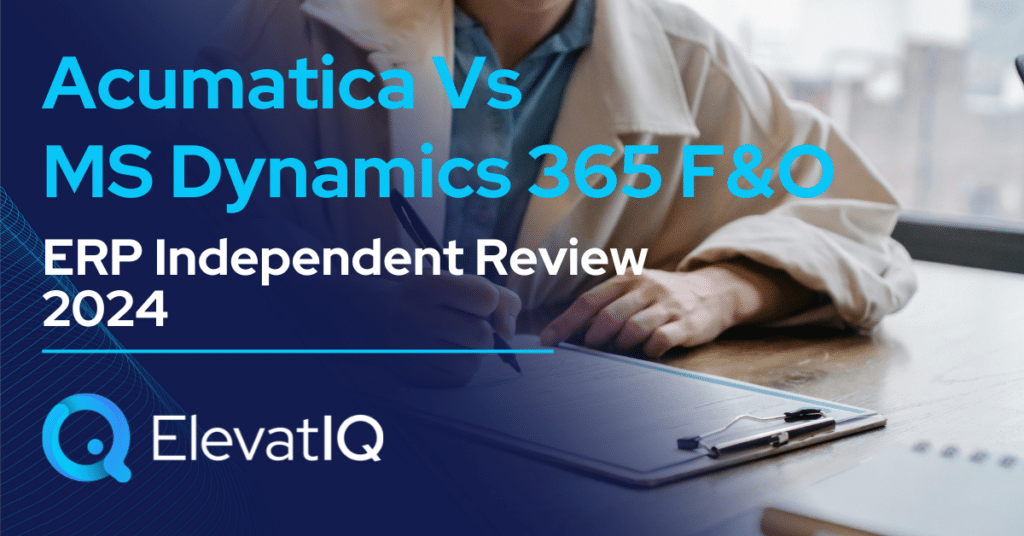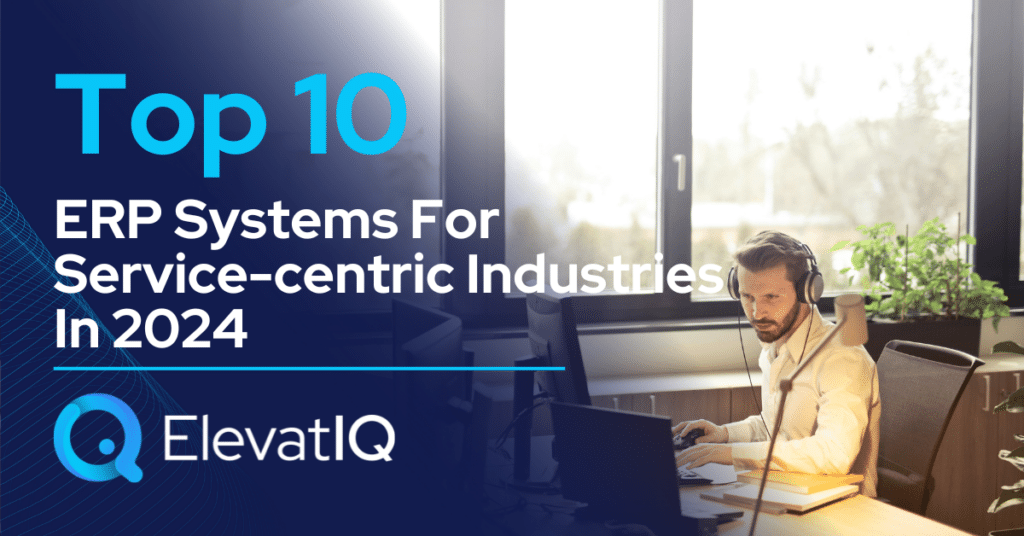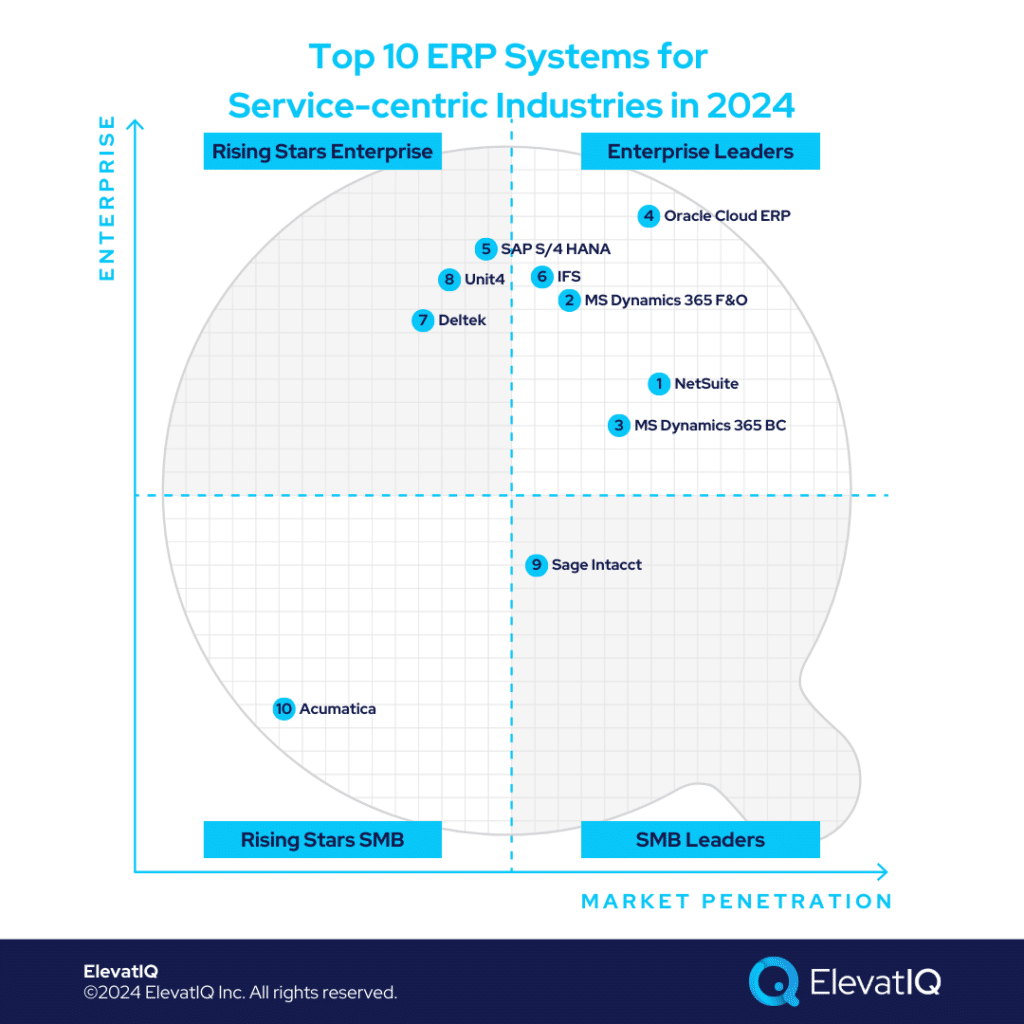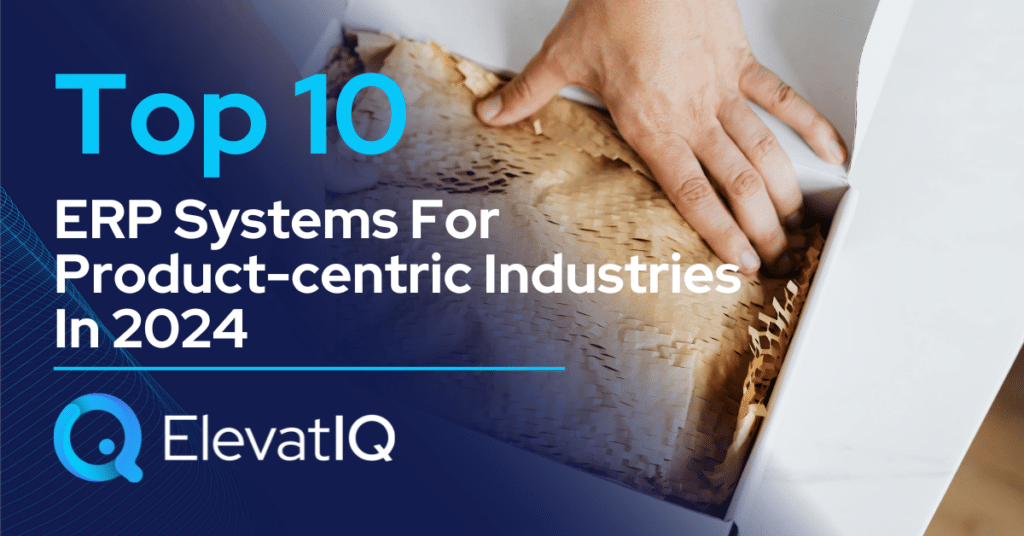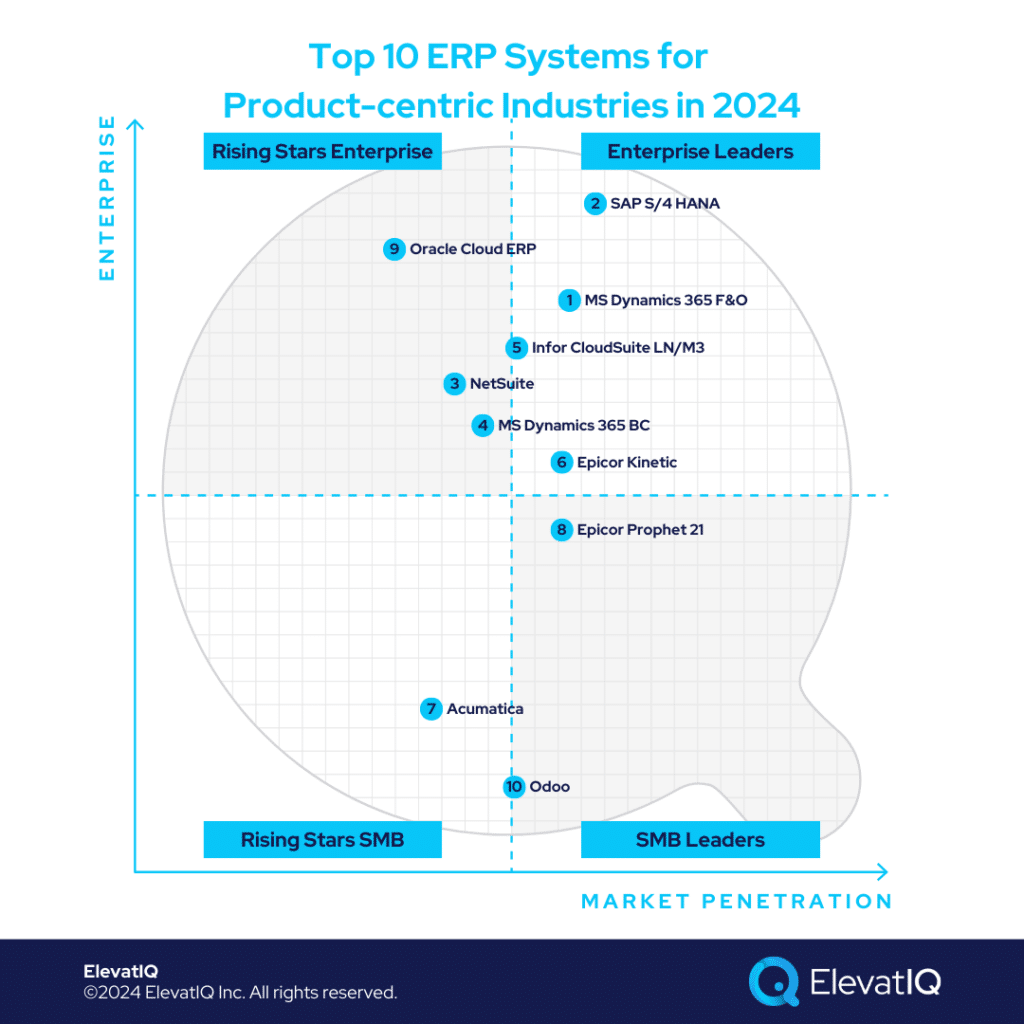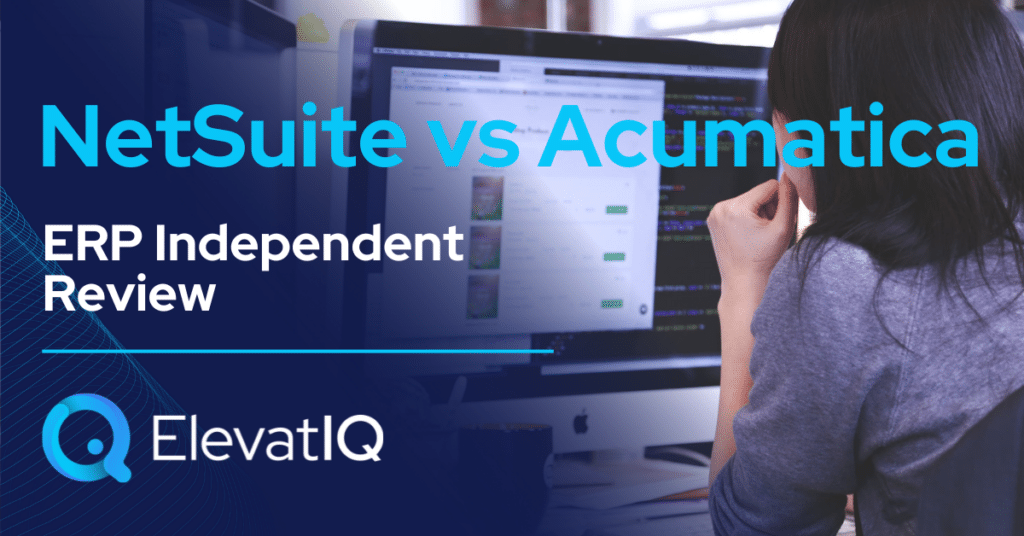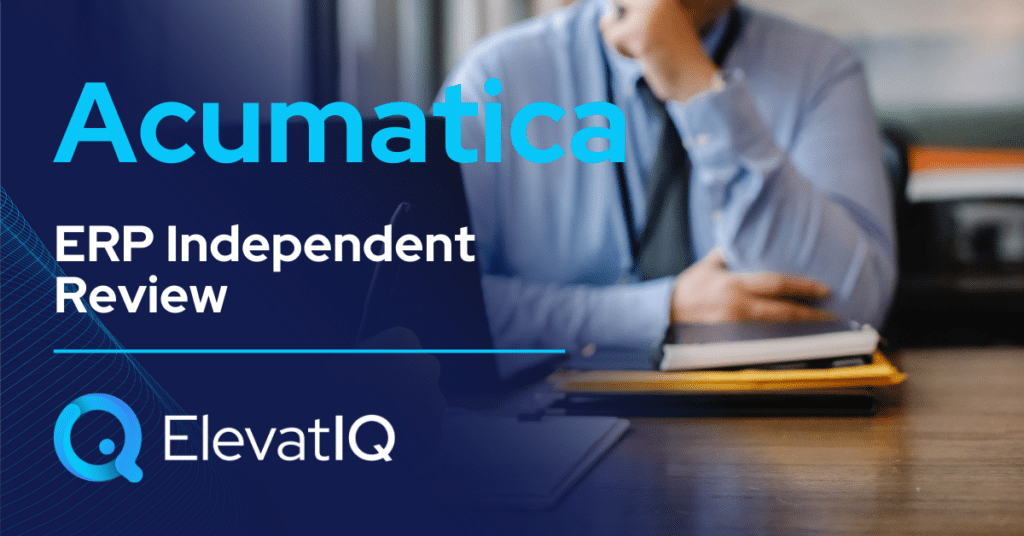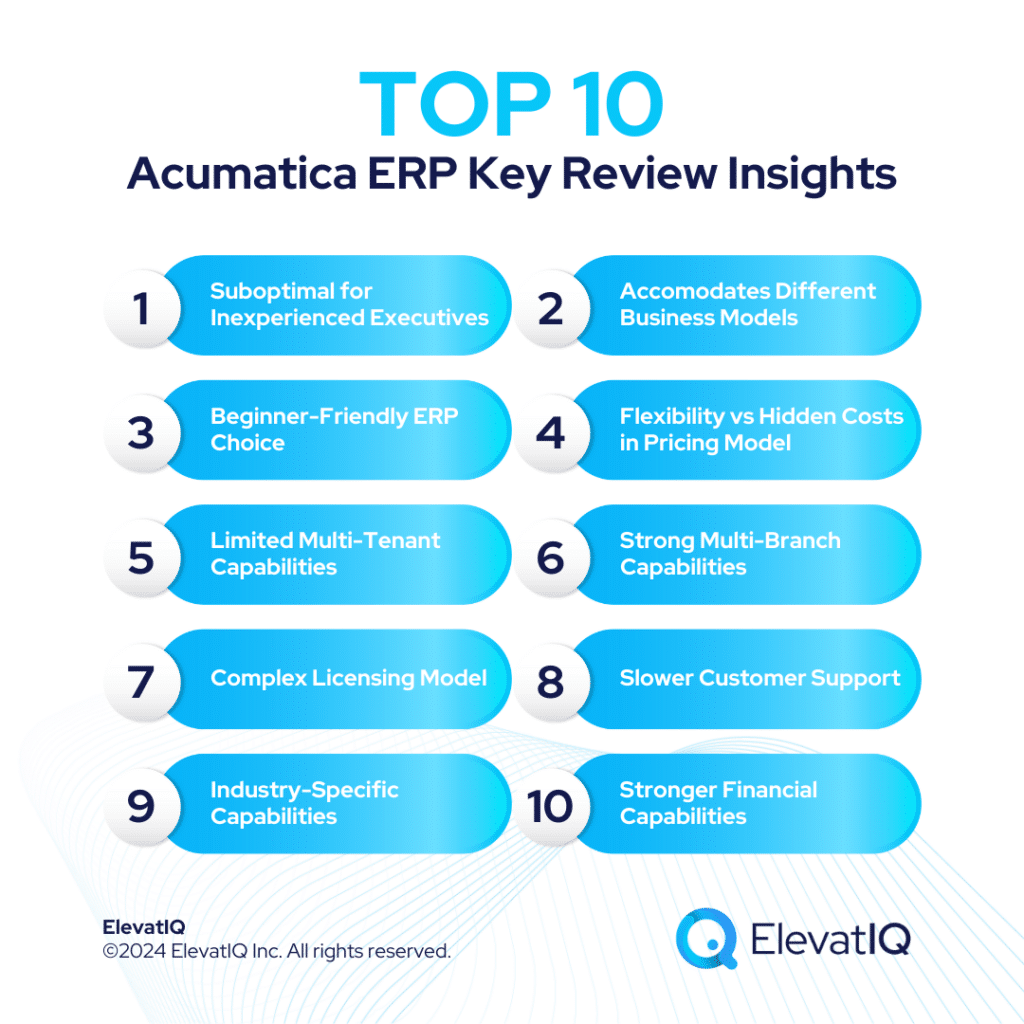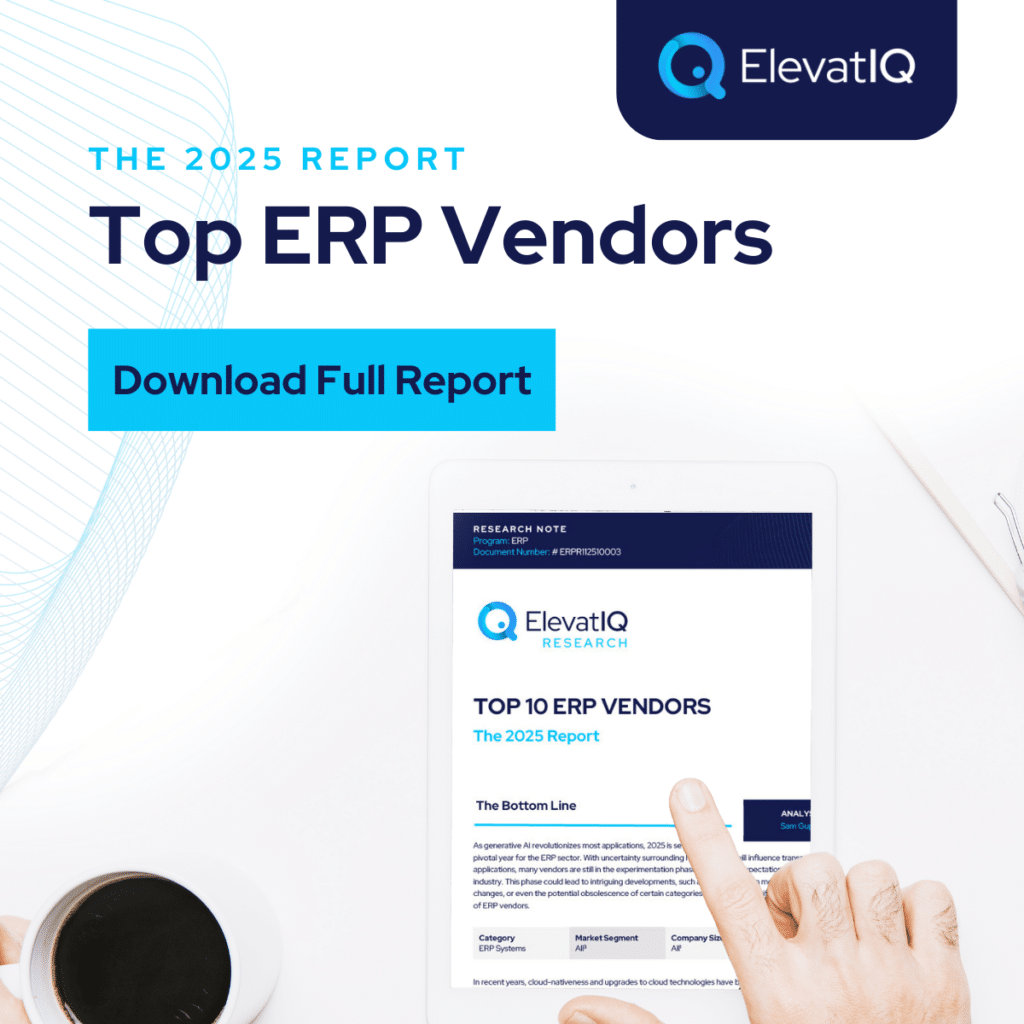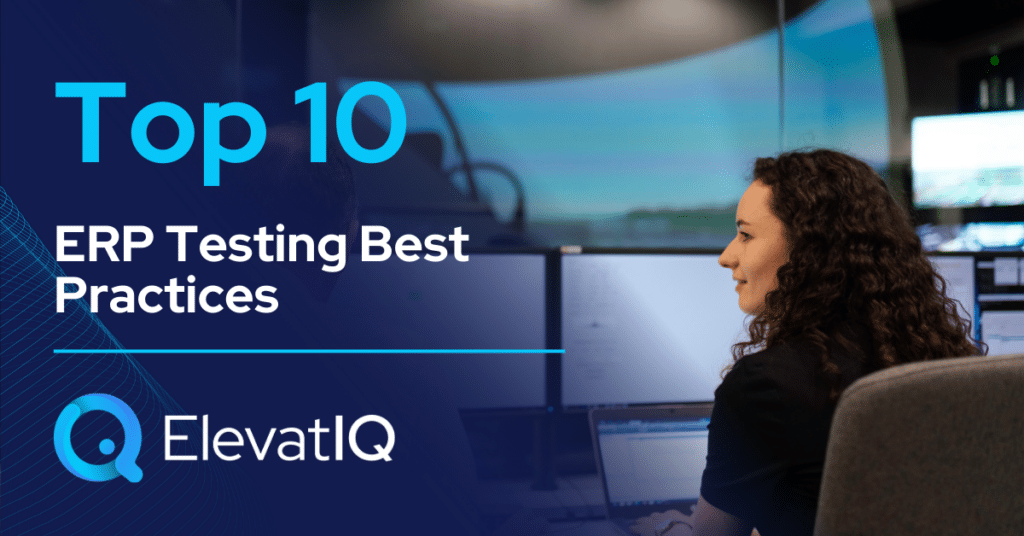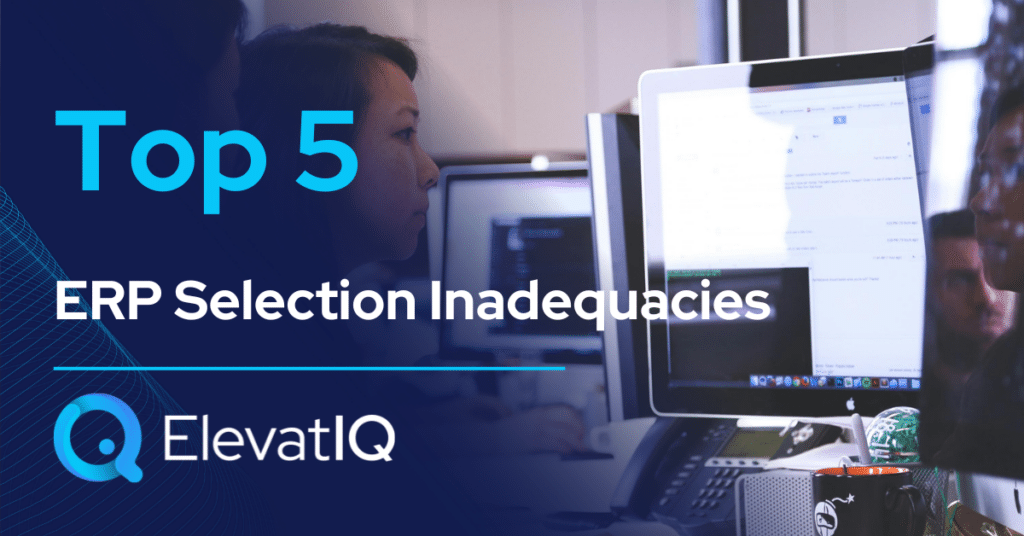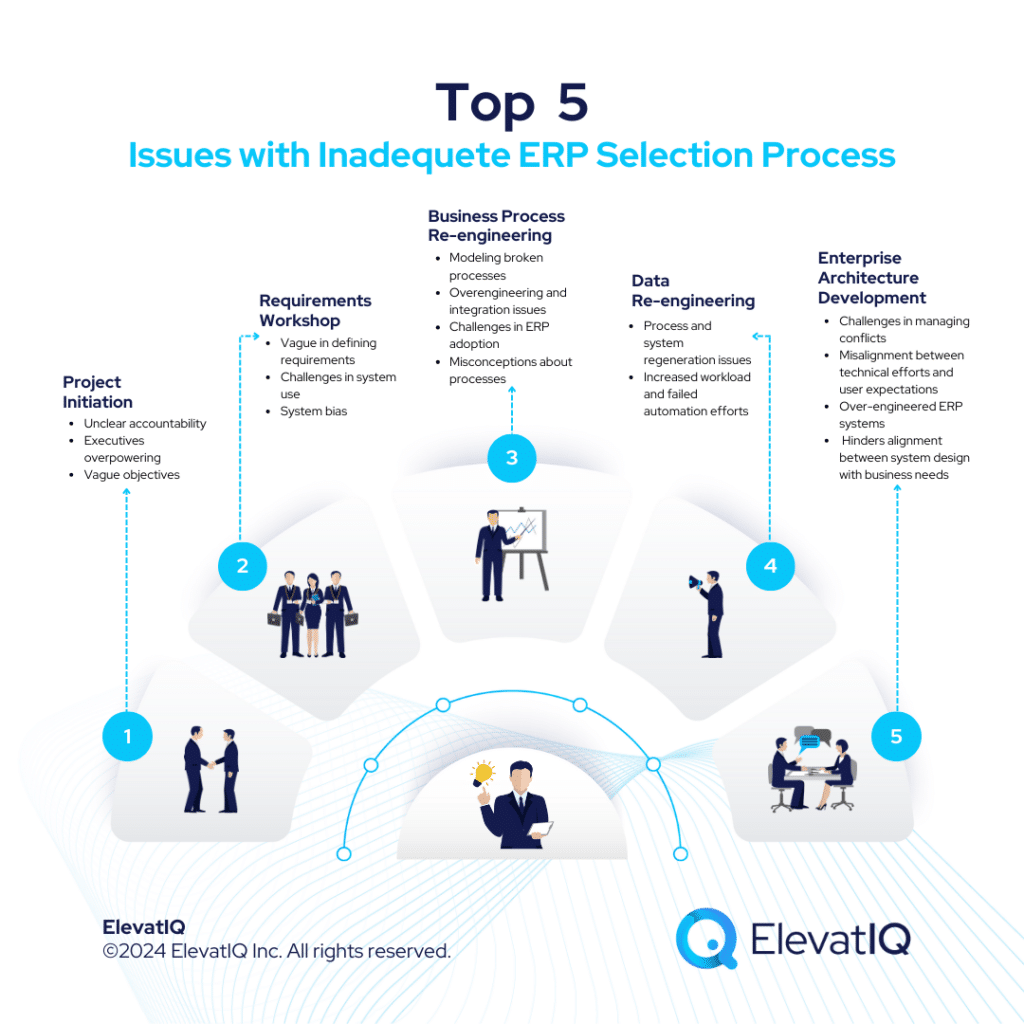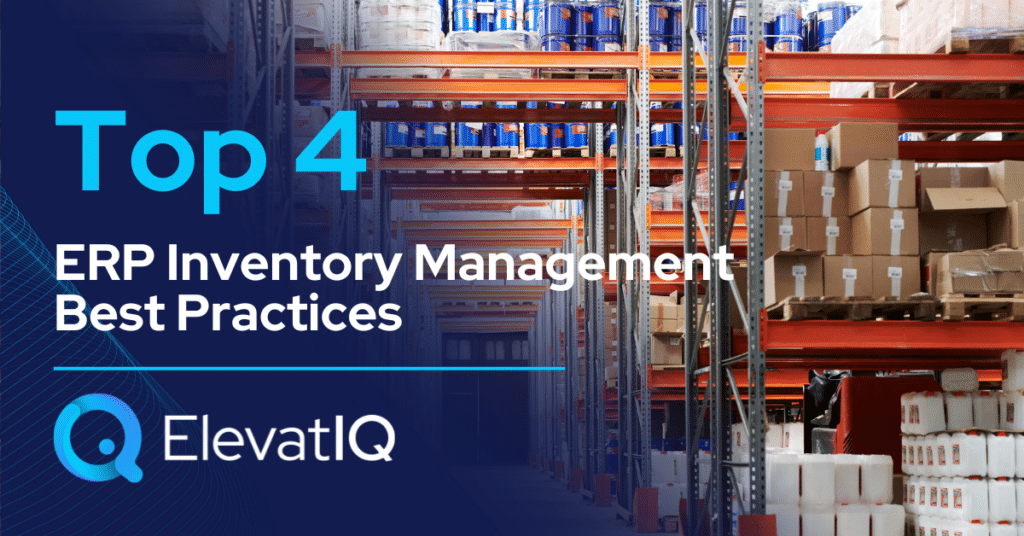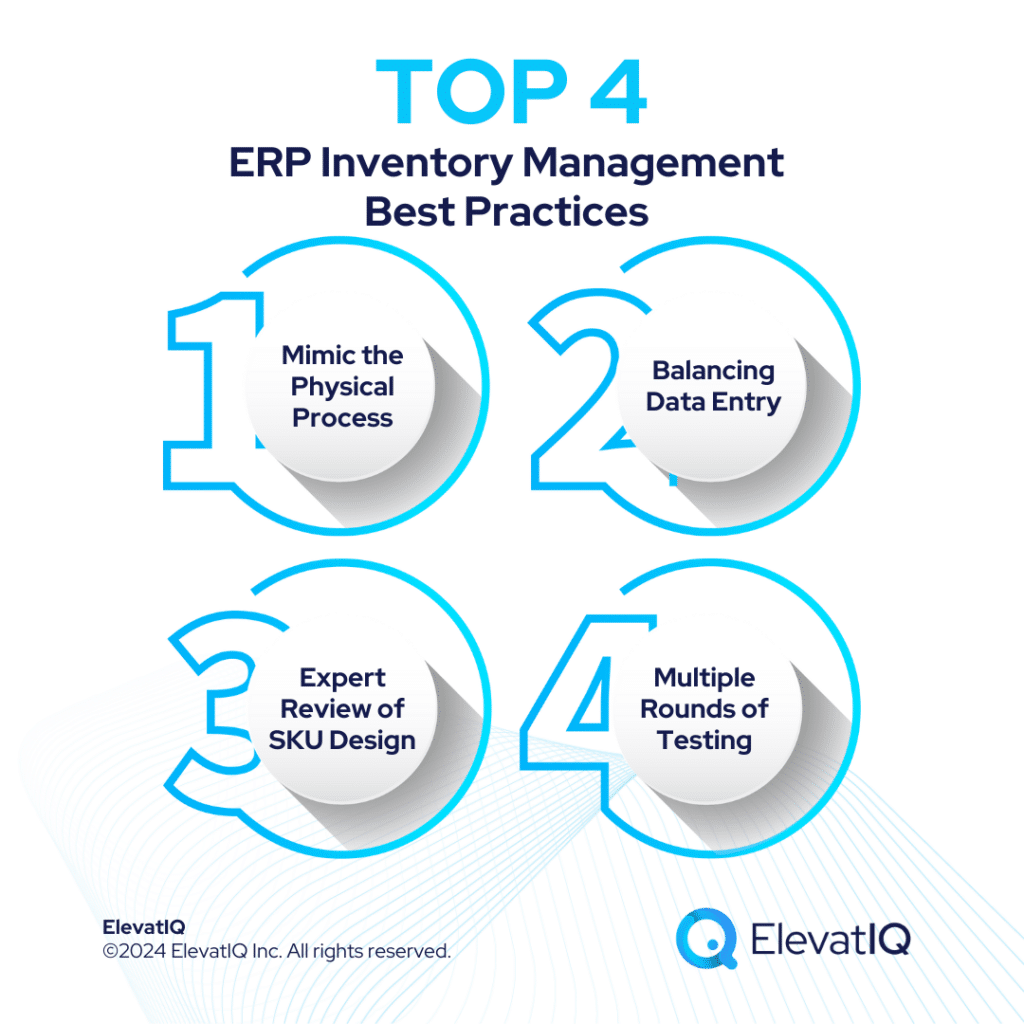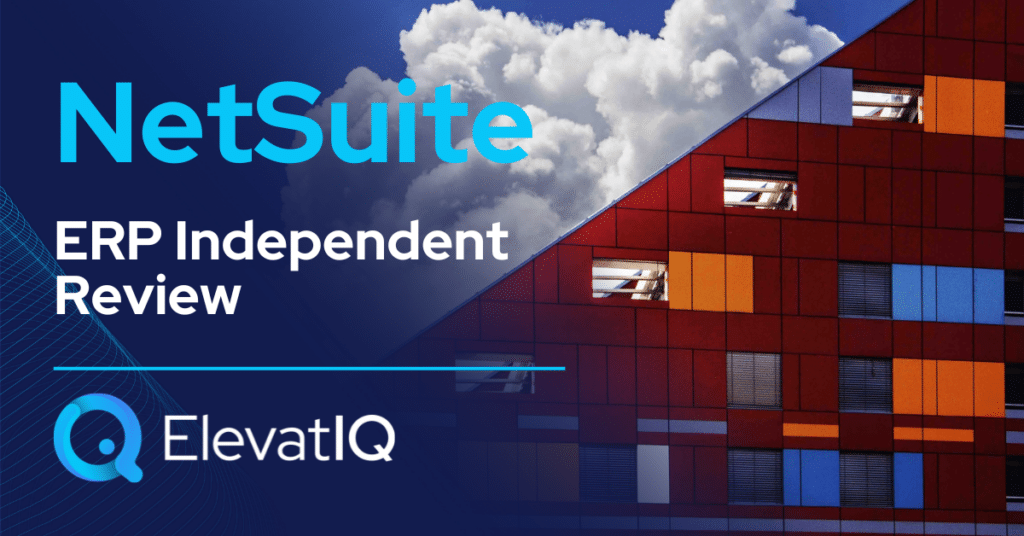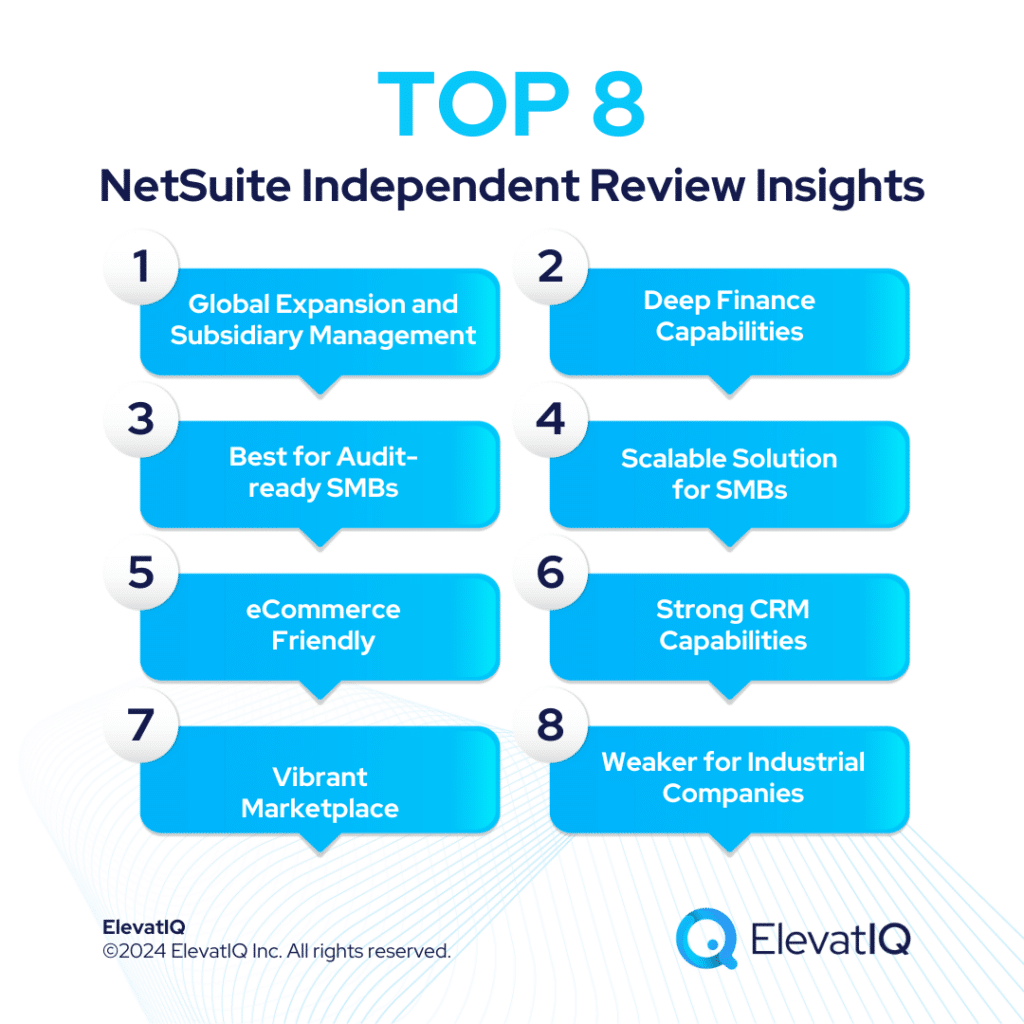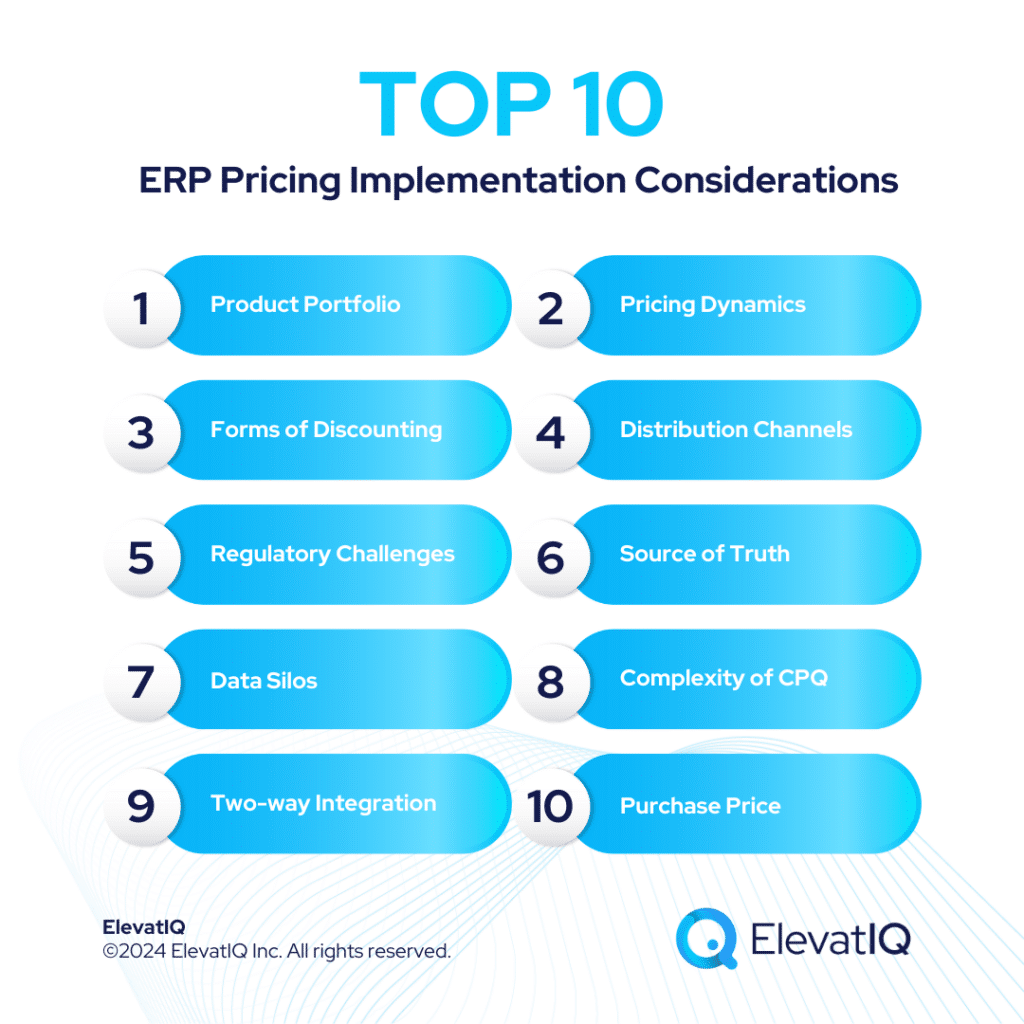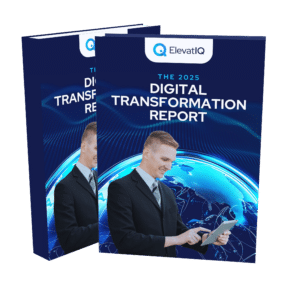Acumatica Vs MS Dynamics 365 F&O Independent Review 2024
Microsoft Dynamics 365 F&O stands out for its enhanced cloud-native functionality, particularly leading in capabilities over competitors like SAP S/4 HANA and Oracle Cloud ERP. It caters to large, global companies with complex business models, thus offering mature technology and a successful track record across industries. In contrast, Acumatica targets SMBs with revenues ranging from $10-100 million, providing multi-branch capabilities but limited native localization support.
Dynamics 365 F&O is ideal for companies with diverse global entities, spanning industries like manufacturing, distribution, and construction, while Acumatica excels in streamlining inventory and costs for smaller enterprises. However, navigating the Dynamics 365 ecosystem may require assistance due to the presence of unqualified partners. Despite some technical issues, Dynamics 365 F&O remains a solid choice for companies of varying sizes and models. Conversely, Acumatica serves as a suitable starting system for SMBs despite its limitations in advanced features.
So if you have narrowed down your choices between Acumatica vs Microsoft Dynamics F&O, this comparison looks under the hood and provides crucial information for your ERP selection project. So, let’s dive in?
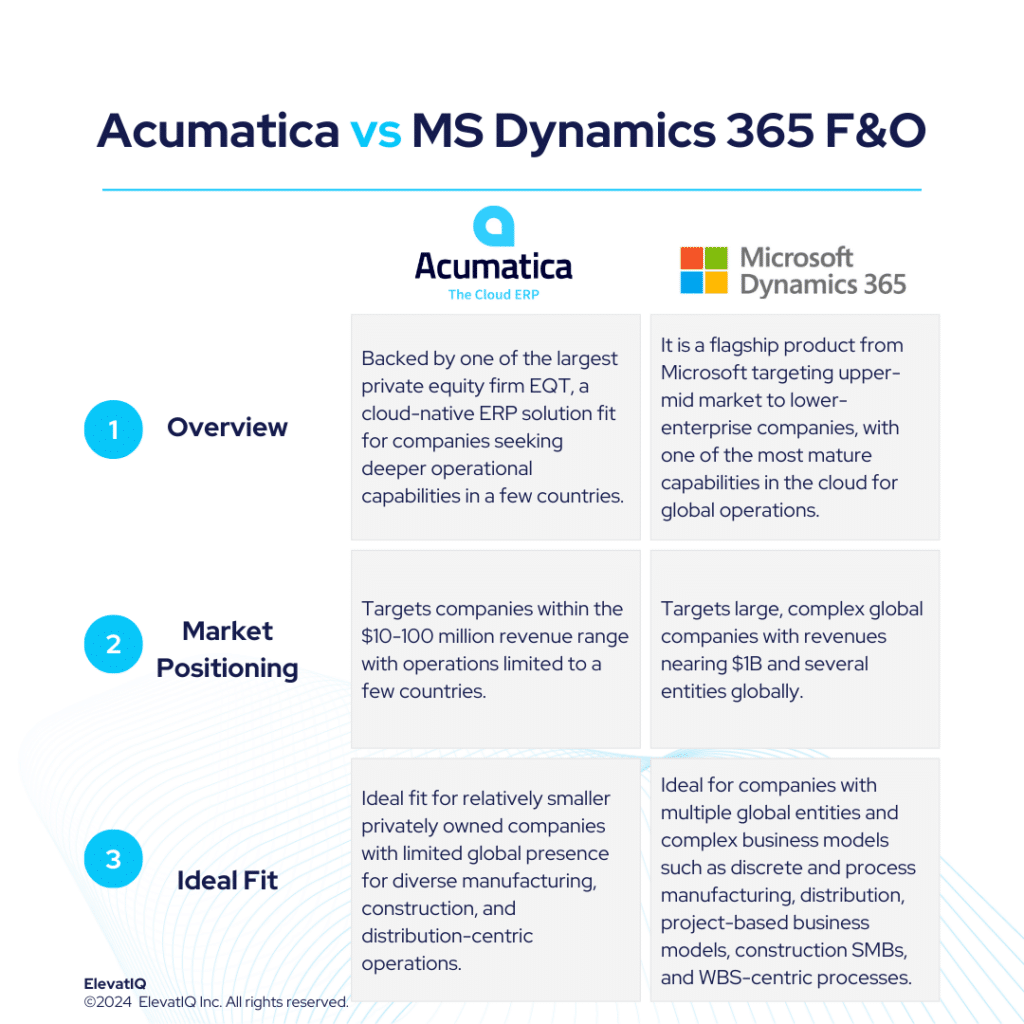
| Acumatica | Microsoft Dynamics 365 F&O | |
| Started in | 2008 | One of the most established enterprise software companies in the world. |
| Ownership by | EQT Partners in 2019 | Microsoft |
| No. of customers | 10000+ | Over 50K |
What is Microsoft Dynamics 365 Finance & Operations (F&O)?
Microsoft Dynamics 365 F&O is often the third choice for larger global accounts, following SAP S/4 HANA and Oracle Cloud ERP. It also offers a mature ecosystem with modern, cloud native technologies, proving successful across various industries. It is perhaps the most diverse solution accommodating several global business models in one database, making it an ideal solution for particularly lower enterprise companies. While a great fit as a corporate ledger for large enterprises, it’s not as proven as other leading solutions in the enterprise market with workloads as high as millions of journal entries per hour that Fortune 1000 companies might demand.
Microsoft Dynamics 365 F&O excels in localizations where other solutions may falter. A vibrant ecosystem makes it suitable for private equity and holding companies aiming to particularly streamline their portfolio companies on one solution. SMBs, however, might find its complex data model overwhelming. Large, complex global companies with revenues particularly exceeding $1B will find Microsoft Dynamics 365 F&O appealing.
Although Microsoft Dynamics 365 Finance and Operations lacks the operational depth of specialized solutions, larger companies favor its corporate-level financial control. In a two tier setting, they often utilize additional Dynamics 365 F&O add-ons, particularly like Adeaca for operational requirements. Furthermore, MS365 F&O offers seamless integration for field service, HCM, and CRM at the database level, empowering large companies to construct a best-of-breed architecture. It is especially strong with WBS-centric processes covering operational and financial schedules equally well. The challenge with MS Dynamics 365 F&O would be the best-of-breed ancillary systems critical for A&D systems, which are not owned and maintained by Microsoft, thus requiring third party add-ons.
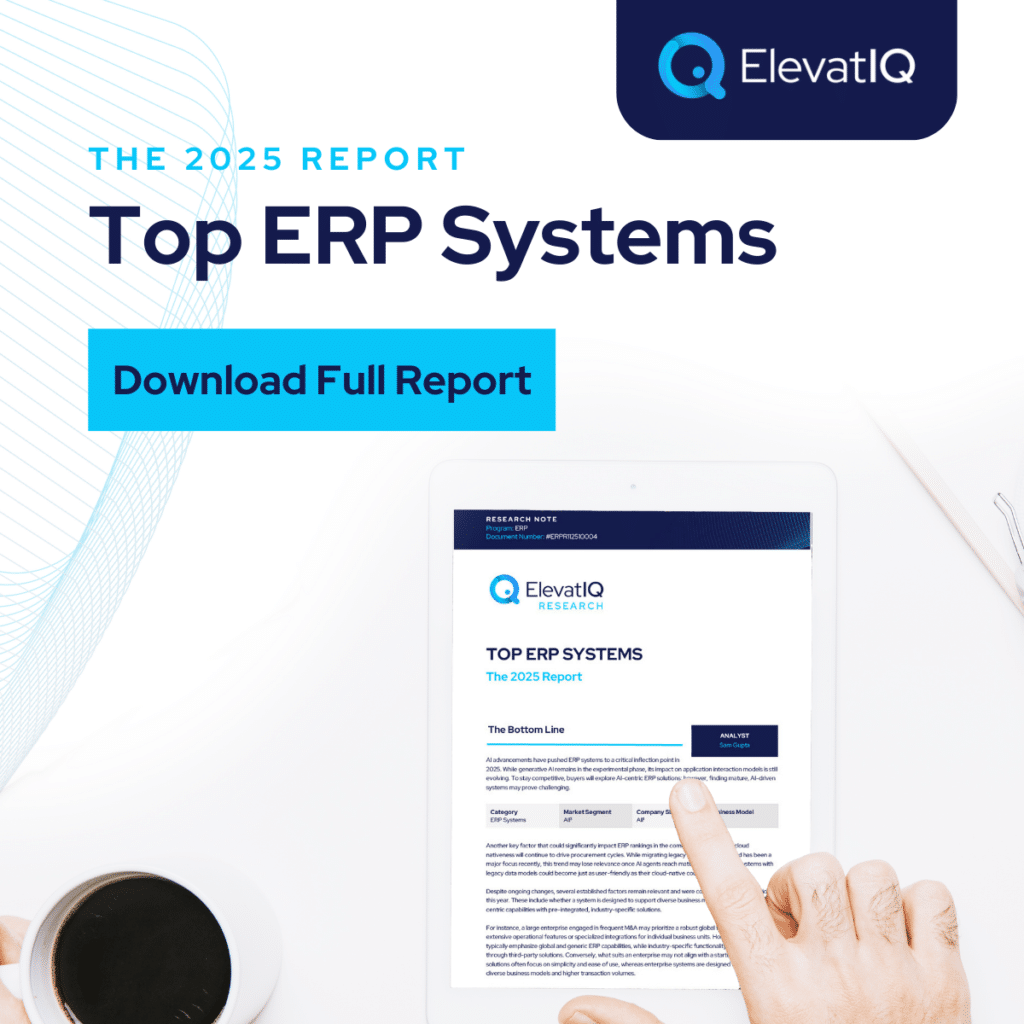
What Is Acumatica?
Acumatica is one of three cloud-native ERP solutions similar to NetSuite and Sage Intacct. It has extensive multi branch capabilities, particularly making it friendlier for retail-centric operations. It can also host multiple business models as part of the same database spanning manufacturing, distribution, construction, and field service. Thus, making it friendlier for diverse manufacturing or distribution-centric operations. Because of its limited global operational capabilities, it primarily targets US and UK-based companies. Thus, positioned as an ideal choice for companies within the $10-100 million revenue range, most of Acumatica’s customer base falls under this category.
Desiring a user experience akin to Odoo or Quickbooks, Acumatica ERP also offers versatility to accommodate various business models: distribution, manufacturing, or construction focused. Although Acumatica has limitations in mature features like dimensional inventory or allocation, it is an excellent initial system for companies looking to streamline inventory or costs. With transactional processing and some mature capabilities, such as batch transactional processing, Acumatica is positioned as a valuable choice for businesses venturing into their first or second ERP solution.
Acumatica ERP is a fit for companies seeking cloud native experience, particularly emphasizing features like enterprise search and mobility over deeper operational capabilities. Despite its focus on small businesses, Acumatica lacks robust globalization and localization features, catering to a limited number of countries by default. This simplicity, however, benefits smaller companies by avoiding unnecessary layers of multi-entity operations. Although targeting small businesses, Acumatica ERP surpasses Odoo or Zoho with the flexibility of its data layers, necessitating consulting help for implementation. The perceived benefit of Acumatica’s pricing is also a challenge, as it’s notoriously difficult to understand and predict.
Acumatica vs Microsoft Dynamics 365 F&O Comparison
Navigating the choice between Acumatica vs Microsoft Dynamics 365 F&O is a significant decision for businesses particularly looking for operational efficiency and strategic alignment. Thus, this section delves into the comprehensive comparison of Acumatica vs Microsoft Dynamics 365 F&O across various critical dimensions.
| Acumatica | Microsoft Dynamics 365 F&O | |
| Global Operational Capabilities | Has limited multi-entity capabilities. | Can host multiple entities from different countries. |
| Diverse Capabilities | Can handle various business models but lacks maturity. | Can accommodate most business models, may require add-ons. |
| Best-of-breed Capabilities | Limited best-of-breed capabilities, may need third-party add-ons. | Crucial capabilities such as PLM, etc, may not be pre-integrated. |
| Last-mile Capabilities | Limited last-mile capabilities for manufacturing or distribution. | May require add-ons for specific micro-verticals. |
| Operational Functionalities | Emphasizes enterprise search and mobility. | Rich operational functionality for large enterprises. |
| Integration Capabilities | Integrated WMS ideal for budget-conscious companies. | Pre-integrated with CRM and field service. |
| Manufacturing Capabilities | Light manufacturing capabilities. | Mature capabilities support diverse models. |
| Pricing Model | Consumption, named, and concurrent-based. | Cost per user per month with flexible user management, without long-term commitment. |
| Key Modules | 1. Financial Management 2. Construction Management 3. CRM 4. Distribution Management 5. Service Management 6. Manufacturing Management 7. Project Accounting Management 8. Payroll 9. Retail e-Commerce Management 10. Reporting, Dashboard and BI | 1. Financial Management 2. Supply Chain Management 3. Manufacturing Management 4. Human Capital Management 5. Business Intelligence and Reporting 6. Security and Compliance 7. Develop and Customize 8. System Administration |
Acumatica vs Microsoft Dynamics 365 F&O Feature Comparison
Both platforms offer a plethora of features and functionalities designed to streamline business operations and enhance efficiency. In this feature comparison, we delve into particularly the distinct capabilities of Acumatica and Microsoft Dynamics 365 F&O across various critical dimensions, providing insights to aid businesses in making informed decisions regarding their ERP selection. Thus, this section discusses features under each of the following modules , particularly financial management, supply chain management, manufacturing management, and also, business intelligence and reporting capabilities.
Financial Management Comparison
In this section, we are discussing a detailed comparison of the financial management capabilities particularly offered by Acumatica and Microsoft Dynamics 365 F&O. By examining their respective strengths and functionalities, particularly in managing financial processes. Businesses can therefore gain valuable insights to determine the best-suited ERP solution for their financial management needs.
| Acumatica | Microsoft Dynamics 365 F&O | ||
| Financial Management | General Ledger | Tracks all financial transactions and generates financial statements. Also, summarizes various financial accounts and transactions. | Creates and maintains accurate records for financial transactions and generates regular financial reports. |
| Accounts Receivable and Accounts Payable | Tracks all the money company owed but has not collected yet. Also, monitors cash flow by tracking all outstanding invoice payments, as well as available discounts, due dates, and cash requirements. | Automates workflows for managing vendor invoices, payments, and customer invoicing, streamlining the entire invoicing process and improving cash flow management. | |
| Cash Flow Management | Manages day-to-day transactions, cash balances, funds transfers, and bank account reconciliations in one place. | Provides comprehensive cash flow forecasting capabilities, allowing to project future cash positions, identify potential shortfalls, and make informed decisions. | |
| Other Features | Currency Management – Creates estimates for new or existing items, convert to bills of material, production orders. | Chart of Accounts -Enables the creation of a hierarchical structure for categorizing financial information. | |
| Tax Management – Provides centralized tax configuration, management, and reporting. | Budgeting and Forecasting – Creates and manages budgets across different departments and business units. Also, leverages historical data and predictive analytics, to make accurate projections and align their financial strategies with business goals. |
Supply Chain Management Comparison
In this comparison, we explore and analyze the supply chain management capabilities of Acumatica and Microsoft Dynamics 365 F&O, shedding light particularly on their respective strengths and weaknesses.
| Acumatica | Microsoft Dynamics 365 F&O | ||
| Supply Chain Management | Warehouse Management | Enables to capture real-time visibility into inventory controls. Also, streamlines warehouse operations and breaks down the silos. | Provides advanced warehouse and transportation management features, including inventory tracking, order fulfillment, shipment planning, and real-time visibility into logistics operations. |
| Service Management | Enables quick capture of service needs, assign faster, and track progress in real-time. Features include contract management, appointment schedules, and a full-featured mobile application for service-driven businesses, wholesale distributors, construction companies, and manufacturers for deliveries, installation, or remote service operations. | Establishes service agreements and service subscriptions, handles service orders and customer inquiries, and manages and analyzes the delivery of services to customers. | |
| Inventory Management | Simplifies inventory processes with flexible item management, quality traceability, and robust replenishment to balance supply and demand. | Offers real-time visibility into inventory levels, demand, and supply, enabling organizations to optimize their inventory planning, reduce stockouts, and improve customer satisfaction. | |
| Other Features | Purchase Order Management – Streamlines procurement processes to ensure a steady supply of materials while enforcing policy and process controls. | Procurement and Sourcing – Streamlines the procurement process by providing end-to-end visibility and control over purchasing activities. Also automates and optimizes the procurement workflows, reducing costs and improving supplier relationships. | |
| Sales Order Management – Centrally manages sales activities such as entering quotes, fulfilling sales orders, creating shipments, tracking prices, applying discounts, and viewing available inventory. | Transportation Management – Offers real-time visibility into logistics operations. | ||
| Requisition Management – Organizes and simplifies complex distribution processes involving multiple products and suppliers. | Demand Planning and Forecasting – Generates accurate demand forecasts, helping organizations optimize production planning, inventory levels, and procurement decisions. |
Manufacturing Management Comparison
This section delves into a comprehensive comparison of their manufacturing management functionalities, particularly shedding light on their respective strengths and limitations to assist businesses in making informed decisions aligned with their manufacturing requirements.
| Acumatica | Microsoft Dynamics 365 F&O | ||
| Manufacturing Management | Production Planning | Assists manufacturers in addressing production demand with the agility to adjust to fluctuating schedules, unforeseen equipment malfunctions, delayed deliveries from suppliers, and other unexpected occurrences affecting operations on the factory floor. | Provides comprehensive production planning and control capabilities, allowing organizations to optimize their manufacturing processes. The system supports various production scenarios, including make-to-order, make-to-stock, and engineer-to-order, while providing real-time visibility into production schedules, resource allocation, and material requirements. |
| Other Features | BOM and Routing – Lets you efficiently plan and manage inventories, costs and manufacturing processes. | Shop Floor Management – Offers real-time monitoring of shop floor activities, capturing data on machine utilization, labor productivity, and production progress. | |
| Advanced Planning and Scheduling – Lets you create a more streamlined and accurate production scheduled, better enforce delivery dates and optimize for capacity. | Product Lifecycle Management – Enables organizations to manage the entire product lifecycle, from design and engineering to manufacturing and after-sales service. The system integrates product data, engineering change orders, and quality management processes, ensuring seamless collaboration and visibility across different departments. | ||
| Estimating – Create estimates for new or existing items, convert to bills of material, production orders. | Quality Control and Compliance – Provides robust quality control and compliance features, allowing organizations to define quality standards, perform inspections, track non-conformances, and ensure adherence to regulatory requirements. |
Business Intelligence and Reporting Comparison
This section discusses the BI and reporting features of both platforms, particularly shedding light on their respective strengths and limitations to assist businesses in selecting the most suitable solution for their analytical needs.
| Acumatica | Microsoft Dynamics 365 F&O | ||
| Business Intelligence and Reporting | Real-time Analytics and Dashboard | Helps view key information at a glance with real-time dashboards customized by individual, role, or department. | Enables organizations to gain real-time insights into their operations with interactive dashboards and reports. Also, provides visual representations of key performance indicators, financial metrics, and operational data, empowering stakeholders to make data-driven decisions. |
| Reporting | Delivers customized views of your business overall and focused views of departments and functions. | Creates custom reports and visualizations tailored to specific needs. This flexibility enables in-depth analysis, data exploration, and the generation of actionable insights to drive continuous improvement and strategic decision-making. |
Pros of Acumatica vs Microsoft Dynamics 365 F&O
When evaluating ERP solutions, understanding the advantages of Acumatica vs Microsoft Dynamics 365 F&O is crucial. In this section, we are particularly discussing the strengths of Acumatica vs Microsoft Dynamics 365 F&O across various dimensions. Thus, highlighting on their respective capabilities and functionalities.
| Acumatica | Microsoft Dynamics 365 F&O |
| Great 1st or 2nd ERP choice due to limited layers and mature capabilities for larger companies. | Has a significant advantage in its extensive consulting base and a vibrant marketplace, a unique benefit unmatched by many ERP systems. |
| Accommodates different business models spread in fewer countries under one database. | Supports global operations and business models and pre-baked integration for the best-of-breed CRM and field service solutions. |
| Great fit for SMB B2B businesses with complex product mixes | Embedded WMS and TMS processes help companies that might require end-to-end traceability even after the good leaves the dock. |
| Born in the cloud with consistent design principles across the application. Superior use experience than MS Dynamics F&O. | Legacy product rearchitected for the cloud. So, while better than other legacy products that might be behind in the cloud. May not have as superior user experience as Acumatica. |
Cons of Acumatica vs Microsoft Dynamics 365 F&O
Just like recognizing strengths is important, it’s also crucial to weigh the specific drawbacks of Acumatica vs Microsoft Dynamics 365 F&O. Therefore, in this section, we will delve into the limitations and challenges associated with Acumatica vs Microsoft Dynamics 365 F&O across various operational and financial dimensions.
| Acumatica | Microsoft Dynamics 365 F&O |
| Limited capabilities when multiple countries with different currencies and sub-ledgers need to be hosted as part of the same solution. | Overwhelming for smaller companies with the configuration and approval flows built for large enterprises. |
| Not fit for companies with over $100 million in revenue. | Might not be able to match the performance expectations of larger organizations where processing millions of journal entries per hour is required. |
| The mobile capabilities are leaner for complex reporting scenarios. | Overbloated financial control processes, such as compliance, allocation, and approval flows, which are only necessary for large organizations. |
| Consumption-based pricing requires consulting expertise to estimate transactions as the pricing is not as predictable. | May require consulting assistance to navigate the channel, given the presence of unqualified ISVs and VARs. |
| Multiple add-ons such as MES, PLM, and quality, posing integration and communication challenges with the core systems required for complex manufacturing. | Integration with A&D-specific PLMs, configurators, and CPQ systems is not out-of-the-box, increasing the implementation time and costs. |
| The last-mile capabilities required for manufacturing or industrial distribution may not as strong as purpose-built solutions such as Infor or Epicor but stronger than NetSuite. | The last-mile capabilities for specific A&D verticals, such as integration with GovCon processes and databases, may require solutions from third parties or custom integration, making the implementation overly expensive. |
Conclusion
In conclusion, the comparison between Acumatica and Microsoft Dynamics 365 Finance & Operations underscores the importance of aligning ERP solutions with the unique needs and priorities of businesses. Acumatica’s cloud-native platform offers flexibility and versatility, making it an ideal choice, particularly for smaller companies with limited global presence seeking streamlined inventory and cost management. On the other hand, Microsoft Dynamics 365 F&O stands out for its maturity and comprehensive support for large, complex global enterprises, although navigating its ecosystem may require additional assistance.
Ultimately, the decision between Acumatica and Microsoft Dynamics 365 F&O depends on factors such as company size, industry vertical, and specific operational requirements. Thus, by carefully evaluating these factors and leveraging the insights provided in this comparison, businesses can make informed choices that align with their long-term goals, driving efficiency, and competitiveness in today’s dynamic market landscape. Also, engaging with an ERP independent consultant can greatly facilitate the decision-making process by providing expert insights and guidance tailored to the unique requirements of the business and how they align with the core strengths of these two products.

FAQs
Acumatica Vs MS Dynamics 365 F&O Independent Review 2024 Read More »

